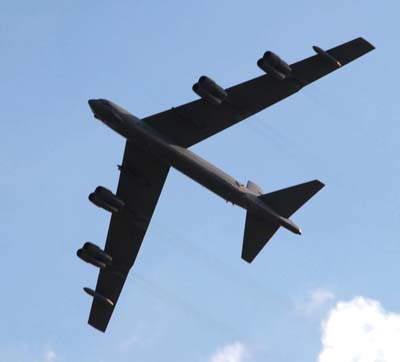Air  Force Vice Chief of Staff Gen. Phillip Breedlove on Thursday offered some details on the Pentagon’s family of future long-range strike systems. In addition to the Air Force’s new long-range, penetrating bomber as its centerpiece, the “family” will include “some sort” of prompt global strike system, a new long-range standoff weapon, and one or two “enabler” systems, he told attendees of AFA’s Air Warfare Symposium and Technology Exposition in Orlando, Fla. The bomber will be relevant in multiple theaters, able to penetrate the worst anti-access environments, and be “affordable,” he said. The PGS—either a conventionally armed ICBM or SLBM-type missile launched from the continental US or a submarine—will be able to hit any target worldwide in 30 minutes to 40 minutes. The standoff weapon will have to be able to get at hardened, deeply buried targets, he explained. The other two platforms will be “utility infielders,” with a modular capacity to carry out “any number of missions” ranging from electronic attack to intelligence-surveillance-reconnaissance, to machine-to-machine cuing, in order “to enable other machines to do their business,” he said. They will also be “very stealthy,” Breedlove emphasized.
Force Vice Chief of Staff Gen. Phillip Breedlove on Thursday offered some details on the Pentagon’s family of future long-range strike systems. In addition to the Air Force’s new long-range, penetrating bomber as its centerpiece, the “family” will include “some sort” of prompt global strike system, a new long-range standoff weapon, and one or two “enabler” systems, he told attendees of AFA’s Air Warfare Symposium and Technology Exposition in Orlando, Fla. The bomber will be relevant in multiple theaters, able to penetrate the worst anti-access environments, and be “affordable,” he said. The PGS—either a conventionally armed ICBM or SLBM-type missile launched from the continental US or a submarine—will be able to hit any target worldwide in 30 minutes to 40 minutes. The standoff weapon will have to be able to get at hardened, deeply buried targets, he explained. The other two platforms will be “utility infielders,” with a modular capacity to carry out “any number of missions” ranging from electronic attack to intelligence-surveillance-reconnaissance, to machine-to-machine cuing, in order “to enable other machines to do their business,” he said. They will also be “very stealthy,” Breedlove emphasized.
While the Space Force is still making long-term plans to establish high-fidelity live and virtual test and training ranges in the coming years, officials say they're also working with operators to identify near-term gaps and quickly field capabilities to address them.

